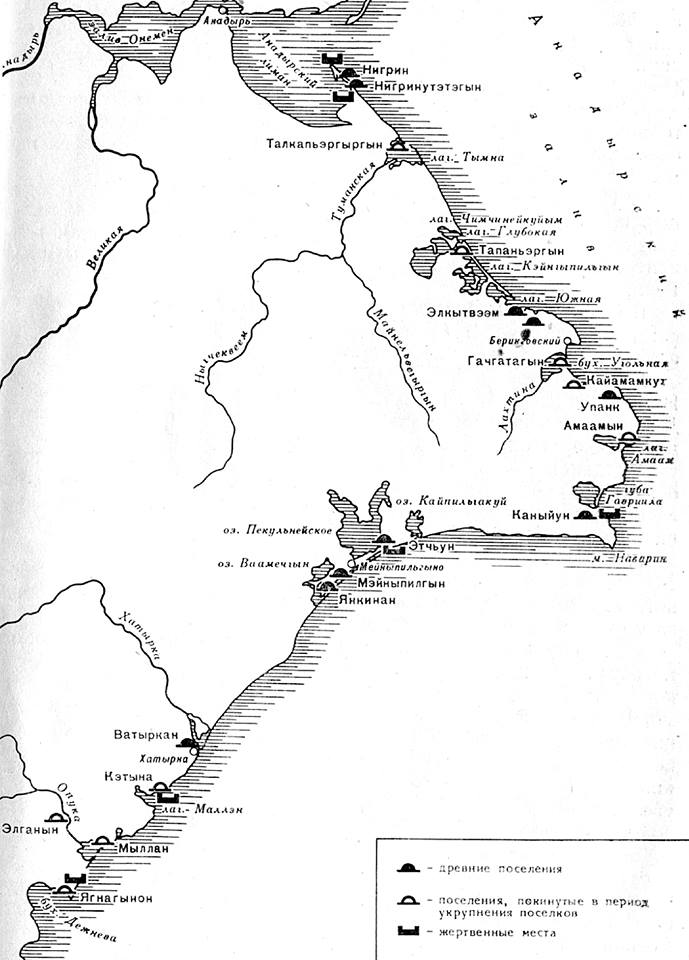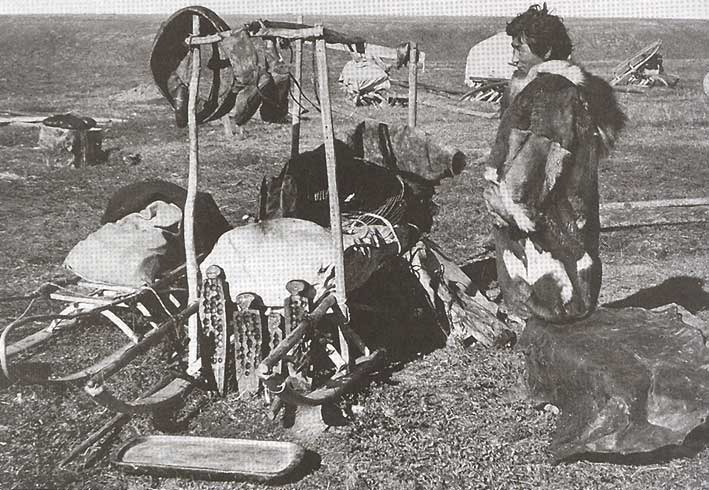 Кереки – аборигены Берингоморья, их поселения известны с ХVII в. на территории от Анадырского залива до Олюторского мыса. Долго находились в естественной природной изоляции.
Кереки – аборигены Берингоморья, их поселения известны с ХVII в. на территории от Анадырского залива до Олюторского мыса. Долго находились в естественной природной изоляции.
In нач. ХVII в. насчитывали ок. 320 чел. В ХVIII в. численность кереков уменьшилась в результате войн с чукчами и коряками, прекратившихся с приходом русских. Но и после этого кереки попали в экономическую зависимость от чукчей. Чукчи использовали их труд в выпасе оленьих стад.
В кон. ХVIII – ХIХ в. К. пострадали от эпидемий оспы, от разорения их природных ресурсов американскими китобоями и японскими рыболовами. В 1897 их насчитывалось 600 чел. Численность кереков в 1926 – 315, в 1937 – 152, в 1959 – 64, в 1970 – 42 чел., в 1975 – 14 чел., 2002 г. – 8 чел., 2010 г. – 4 чел.
По В.В. Леонтьеву, делились на 4 группы: туманские кереки – от Анадырского залива до мыса Барыкова (пос. Нигрин, Нигрунутэтэгин, Талкапъэргырган, Тапанъэргын, Элкытвээм), к ХХ в. ассимилированы чукчами; наваринские кереки – от м. Барыкова до мыса Наварин (пос. Гачгатагын, Кайамамкут, Майнамамкут, Упанк, Амаамын, Каныйун), к нач. ХХ в. остались только в пос. Мейныпильгына; опукинские кереки – от устья р. Хатырки до бухты Наталия (пос. Ватыркан, Мыллан, Китана, Ягнасынон, Ильпин, Мимилвытгын), в ХХ в. ассимилированы чукчами; ковачинские кереки – от бухты Наталия до мыса Олюторский.
Владилен Леонтьев в книге «По земле древних кереков» основными причинами исчезновения народности называет межплеменные войны, резкое сокращение морской фауны в конце XIX века и вспышки эпидемии оспы.




